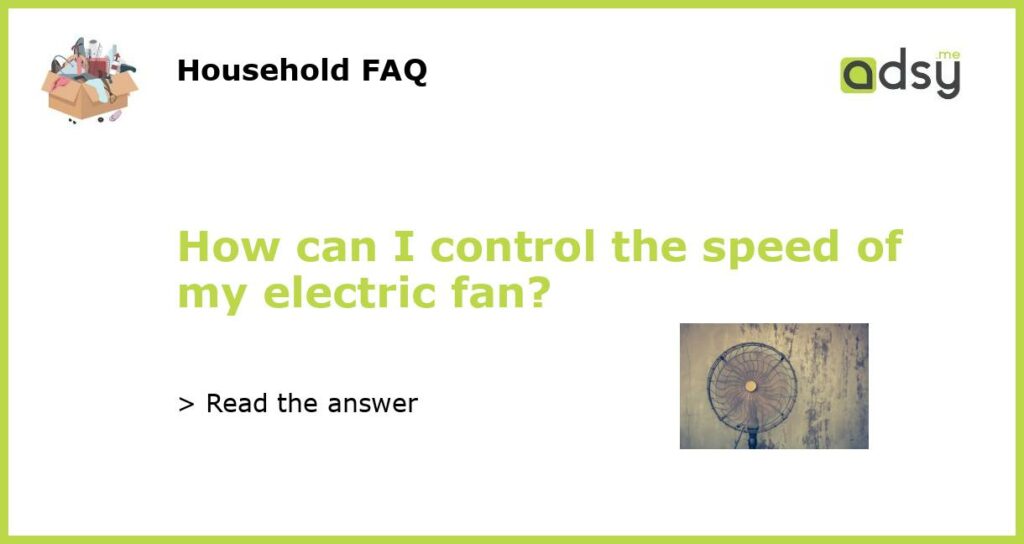Understanding the basics of electric fans
Electric fans have been around for a long time, and they are an essential appliance in many households. However, many people do not understand how electric fans work and how they can control their speed. Electric fans have two main parts; the motor and the blades. The motor powers the fan blades, which move the air and create a cooling effect. The speed of the motor determines the speed of the blades and, therefore, the speed of the fan.
The different types of electric fans
There are different types of electric fans, and each operates differently. Some of the most common types of electric fans include ceiling fans, pedestal fans, tower fans, and box fans. Ceiling fans are mounted on the ceiling and are controlled by a wall switch or a remote control. Pedestal fans are portable and can be moved from one place to another. Tower fans are tall and thin and are designed to distribute the air evenly. Lastly, box fans are square and are typically placed on a flat surface. The type of fan you have will determine how you can control its speed.
How to control the speed of your electric fan
Controlling the speed of your electric fan depends on the type of fan you have. Ceiling fans, for instance, are controlled by a wall switch or a remote control. You can adjust the speed by pressing the buttons on the remote control or turning the switch up or down. Pedestal fans, on the other hand, have a speed control dial that allows you to adjust the speed. Tower fans have a control panel that lets you choose the speed, oscillation, and other settings. Lastly, box fans typically have a three-speed setting that can be controlled by a switch on the fan itself.
Additional tips for controlling your electric fan
Aside from the features mentioned above, there are additional tips you can use to control the speed of your electric fan. For instance, you can use a fan controller, which is a device that regulates the voltage going to the fan motor, thereby controlling the speed. You can also use a fan with a built-in thermostat, which turns the fan off when the temperature drops below a certain level. Lastly, you can clean your fan regularly to make sure that the blades are not obstructed, which can cause the fan to slow down or stop.
The benefits of controlling the speed of your electric fan
Controlling the speed of your electric fan has many benefits. For starters, it can help you save energy and reduce your electricity bill. By using the fan only when you need it and adjusting the speed as necessary, you can lower your overall energy consumption. Additionally, controlling the speed of your fan can help you create a more comfortable environment. By adjusting the speed based on your specific needs, you can create a cooling effect that is ideal for you. Lastly, by controlling the speed of your fan, you can extend its lifespan and prevent it from breaking down prematurely.






